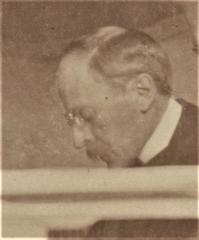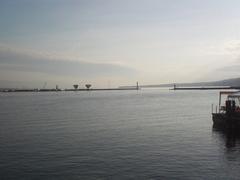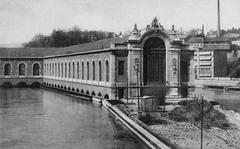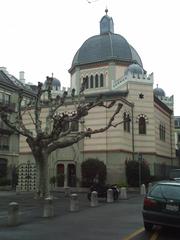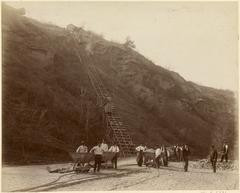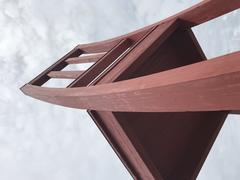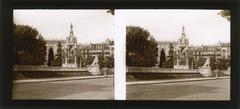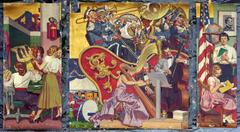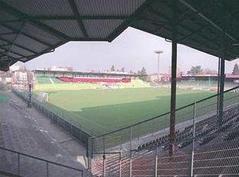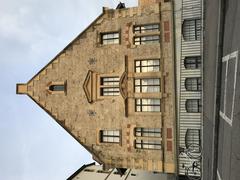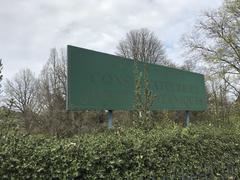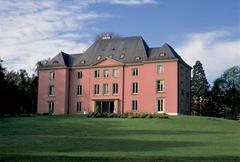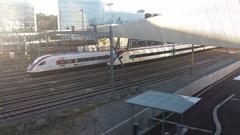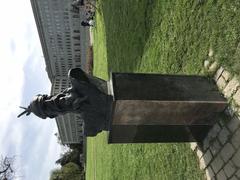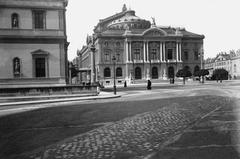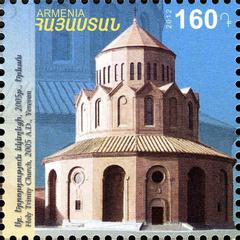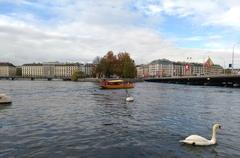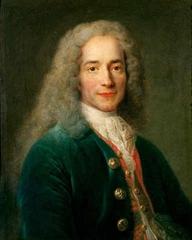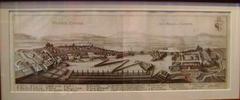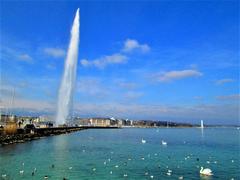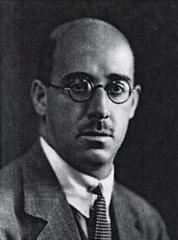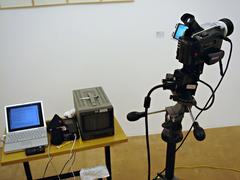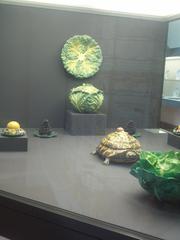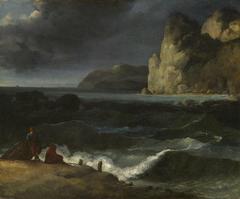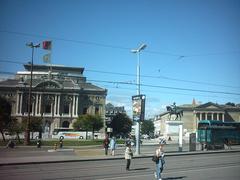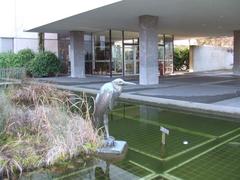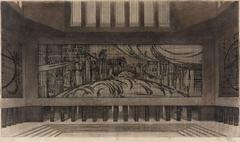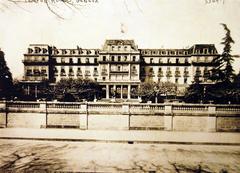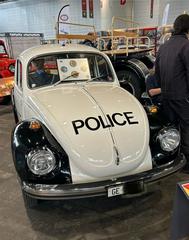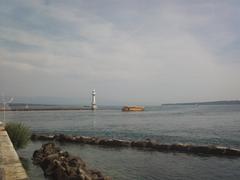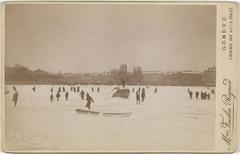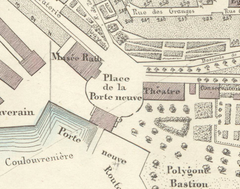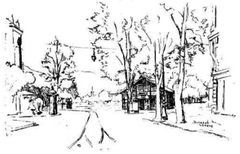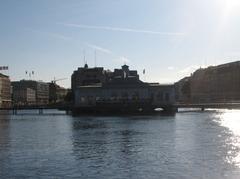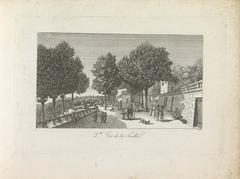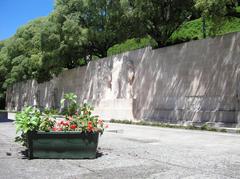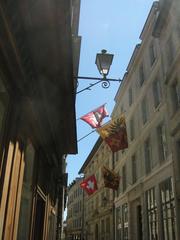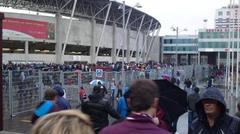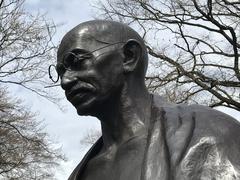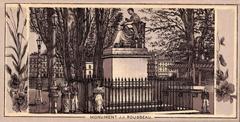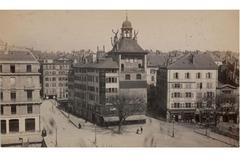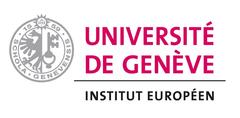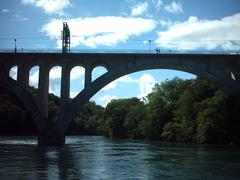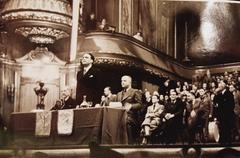Maison De Saussure, Geneva: Visitor Guide, Hours, Tickets & Historic Insights
Date: 03/07/2025
Introduction: Why Maison De Saussure Matters
In the heart of Geneva’s Old Town, Maison De Saussure stands as an enduring symbol of the city’s Enlightenment heritage and architectural splendor. Built in the early 18th century, this grand townhouse not only represents the refined urban development of its era but also embodies Geneva’s pivotal role as a center of scientific and intellectual innovation. The mansion’s storied past, especially its association with the renowned De Saussure family, makes it a must-see for anyone interested in European history, architecture, or science (RouteYou; geneve-archi.ch).
This comprehensive guide covers Maison De Saussure’s history, architectural features, cultural significance, and essential visitor information—including opening hours, tickets, tours, accessibility, and nearby attractions.
Historical Overview
Foundations and Early Ownership (1707–1712)
Maison De Saussure, originally known as Maison Lullin or Hôtel Lullin, was built between 1707 and 1712 for Jean-Antoine Lullin, a leading Genevan merchant. The architect, Joseph Abeille, brought classical French influences to Geneva, designing a residence that signaled the transition from Baroque to Neoclassical architecture. The house’s symmetry, elegant proportions, and decorative flourishes underline the taste and aspirations of Geneva’s burgeoning bourgeoisie (RouteYou).
The De Saussure Legacy
The property passed to the De Saussure family in the 18th century, cementing its place in Geneva’s intellectual and scientific history. Horace-Bénédict de Saussure (1740–1799), a pioneering natural philosopher, lived and worked here. His research in geology, meteorology, and physics, much of it conducted on-site, was foundational for modern science. Later, Ferdinand de Saussure (1857–1913), the founder of modern linguistics, also called this house home, further enhancing its scholarly legacy (unige.ch; Wikipedia).
Architectural and Artistic Features
Exterior Grandeur
Maison De Saussure exemplifies the hôtel particulier adapted for Geneva’s Old Town. The façade features symmetrical windows, a stately stone entrance, wrought-iron balconies, and a gateway adorned with the Saussure family monogram and the date “1722.” The garden façade boasts eleven axes and ornate ironwork, while the monumental arched doorway on Rue de la Cité is topped with a balustrade, reinforcing the house’s patrician status (geneve-archi.ch; flickr.com).
Interior Elegance
Inside, you’ll find original wood paneling—boiseries—with geometric and floral motifs, historic fireplaces, and wide wooden plank flooring. The grand staircase, with its wrought-iron balustrade attributed to Pierre Gignoux, and the main salon, once the most ornate in Geneva, are highlights. Decorative elements, such as the family’s heraldic arms, remain visible above the courtyard gate (geneve-archi.ch).
Scientific and Intellectual Legacy
Horace-Bénédict de Saussure: Enlightenment Innovator
Horace-Bénédict de Saussure, one of the Enlightenment’s leading scientists, made Maison De Saussure a hub of research and learning. He invented devices such as the hygrometer (for humidity), electrometer (for atmospheric electricity), and the cyanometer (for measuring the blueness of the sky), many of which were designed and tested at the house (unige.ch).
First Lightning Rod in Switzerland
Embracing Enlightenment science, Saussure installed Switzerland’s first lightning rod on the property, inspired by Benjamin Franklin. This forward-thinking act, though met with local apprehension, demonstrated the mansion’s role at the forefront of scientific progress (unige.ch).
Intellectual Gatherings and the Société des Arts
The grand salon was the venue for the founding meetings of the Société des Arts in 1776, a society instrumental in advancing science and the arts in Geneva. Saussure’s advocacy for educational reform and science-based curriculum at the Academy of Geneva (now the University of Geneva) further illustrates the Maison’s role in shaping Geneva’s academic landscape (geneve-archi.ch).
Visitor Information
Opening Hours
Maison De Saussure is primarily a private residence and does not maintain regular public opening hours. Access is typically granted during special cultural heritage events, guided city tours, or by arrangement with local tour operators. Always confirm availability and visiting times with the Geneva Tourism Office or via official heritage tour providers.
Tickets and Guided Tours
- Admission: Included in the price of select heritage or cultural tours; individual tickets are not sold for daily visits.
- Guided Tours: Available during special events (typically April–October) or by prior arrangement. Booking in advance is highly recommended.
- Group Visits: Some operators offer group tours; inquire directly for availability and languages offered (myswitzerland.com).
Accessibility
Due to its age and historical structure, Maison De Saussure has limited wheelchair access. While the main reception areas may be partially accessible, upper floors and the attic are not. Visitors with mobility concerns should check with their tour provider in advance.
Getting There
- Address: Rue de la Cité, Old Town, Geneva, Switzerland
- Transport: Easily reached on foot from major landmarks (e.g., St. Pierre Cathedral). Tram lines 12 or 18 stop at “Boulevard Helvétique,” a short walk away. Public parking garages are nearby for drivers (touristplaces.guide).
What to See and Do
Exterior Viewing
Even when the interior is closed, the mansion’s façade and wrought-iron gateway are accessible from the street and make for excellent photographs, especially in the morning light.
Special Events and Temporary Exhibitions
Occasionally, Maison De Saussure participates in city-wide heritage days, hosting temporary exhibitions on its scientific and cultural history. Interactive displays, lectures, and multimedia presentations may be offered during these times.
Nearby Attractions
- St. Pierre Cathedral: Renowned for panoramic city views.
- Place du Bourg-de-Four: Geneva’s oldest square, ideal for a coffee break.
- Maison Tavel: The city’s oldest private house, now a museum.
- Musée d’Art et d’Histoire: Geneva’s major art and history museum.
- Parc des Bastions: A green space with the Reformation Wall and chess boards (touristplaces.guide).
Visiting Tips
- Best Seasons: Spring and autumn are ideal for fewer crowds and mild weather.
- Language: French is primary, but English is commonly spoken at tourist sites; tours are often available in both languages.
- Dining: The Old Town boasts many cafés and restaurants with local and international fare.
- Photography: Permitted in most public areas; always check for room-specific restrictions.
- Safety: Geneva is very safe; standard travel precautions apply (lonelyplanet.com).
Frequently Asked Questions (FAQs)
Q: Can I visit Maison De Saussure any day?
A: No, the house is generally not open daily; access is limited to guided tours or special heritage events.
Q: Where can I buy tickets?
A: Through tour operators or the Geneva Tourism Office. Advance booking is recommended.
Q: Is it accessible for visitors with disabilities?
A: Partial access only; the historic layout limits full accessibility.
Q: Are guided tours available in English?
A: Yes, but check availability and pre-book to ensure your preferred language.
Q: What makes Maison De Saussure historically significant?
A: Its architecture, association with Horace-Bénédict de Saussure, and role in Enlightenment science and culture.
Preservation and Modern Use
Maison De Saussure is a Swiss cultural property of national significance (fr.wikipedia.org), with careful restoration ensuring the preservation of its unique Baroque and Neoclassical features. Today, the house is divided into private apartments, but its legacy is actively celebrated through scholarship, heritage walks, and occasional public events (geneve-archi.ch; flickr.com).
Essential Visitor Summary
- Construction: 1707–1712, by Joseph Abeille for Jean-Antoine Lullin
- Architectural Style: Baroque transitioning to Neoclassicism
- Historic Residents: Horace-Bénédict de Saussure (scientist), Ferdinand de Saussure (linguist)
- Access: Limited; special tours/events only
- Nearby Sites: St. Pierre Cathedral, Musée d’Art et d’Histoire, Place du Bourg-de-Four
- Preservation: National heritage protection; ongoing restoration
- Tip: Enhance your visit with the Audiala app for guided content and up-to-date information
Further Reading and Resources
- Maison de Saussure on geneve-archi.ch
- Maison de Saussure on notrehistoire.ch
- Maison de Saussure on flickr.com
- Horace-Bénédict de Saussure’s scientific legacy (PDF, unige.ch)
- Maison de Saussure on Wikipedia (French)
- RouteYou, Maison De Saussure
- Cronobook, Maison De Saussure Façade Image
- myswitzerland.com, Geneva Historical Sites
- touristplaces.guide, Top Tourist Attractions in Geneva
Plan Your Visit
To explore Geneva’s rich heritage, consider visiting Maison De Saussure during a guided tour or heritage event. Download the Audiala app for exclusive audio guides, maps, and cultural insights, and follow us on social media for updates on open days and events at this and other Geneva landmarks.

